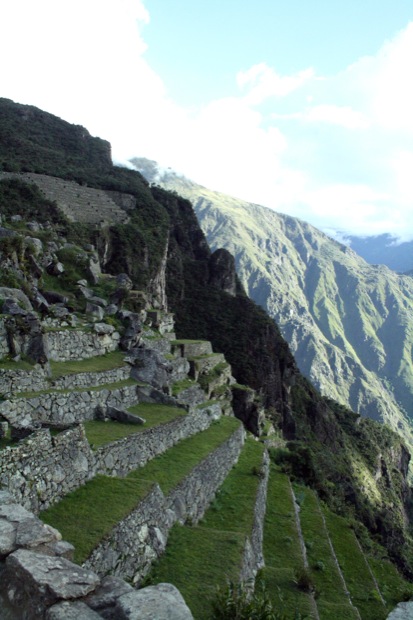
Terraced hillsides step downward from the city’s walls and courtyards
Understandably, Machu Picchu regularly rests atop the various bucket lists of worldwide travelers published by magazines and websites. Its iconic images of a ‘lost world’ resting high in the Andean mountain range are immediately recognizeable to most of us, like the Taj Mahal or Egyptian pyramids would be. We took a winding bus ride up the mountain from the small village of the same name after an hour and a half train ride from Ollantaytambo to get here.
Our guide was careful to point out the variations in stone architecture that separated the living quarters here from the sacred temples or structures that addressed the Inca’s spiritual beliefs. As with Christianity, the number three was sacred to this culture and was represented in various ways–the sun, mother earth and water, for instance, or their elevation of three creatures to spiritual status–the condor, the puma and the snake.
The Incas were master architects and builders, and they built Machu Picchu with earthquakes in mind, using distinct angles for windows and doors that would allow stones to compress into one another as opposed to away from one another in the event of a tremor or worse. Their craftsmanship as masons was extraordinary. Thus, 600 years later, many structures in this citadel are entirely or almost entirely intact. The Incas used a calendar they created from the movement of the sun through the seasons which allowed them to build sacred windows that were positioned to capture the sun’s direct light on specific days of the year. Their calendar was remarkably similar to the one we use today.
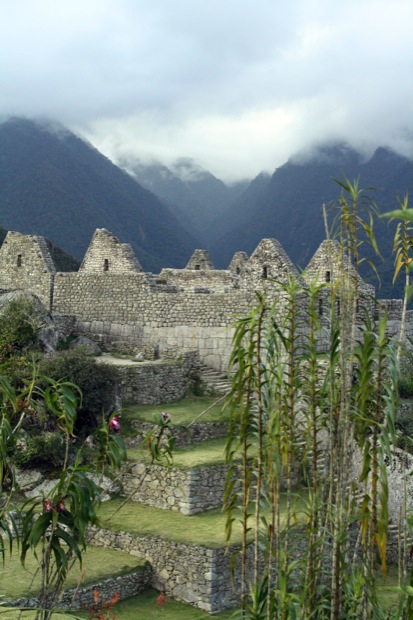
Peruvian tourism leaders have done much to recondition the citadel’s lawns
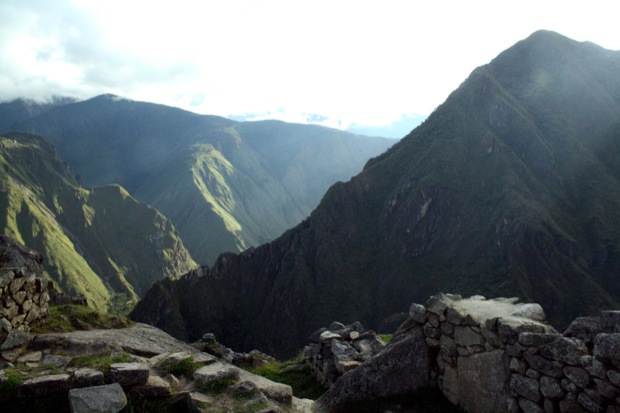
Distant peaks give some idea of just how inaccessible this archaeological marvel really was
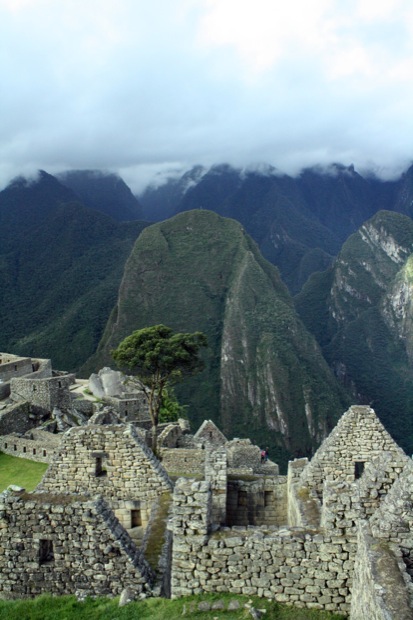
The Incas were master craftsmen and built ‘quake resistant’ structures
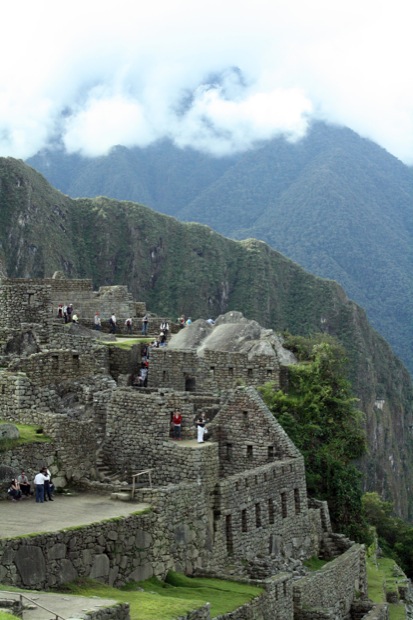
Most of these structures date to the 15th century










